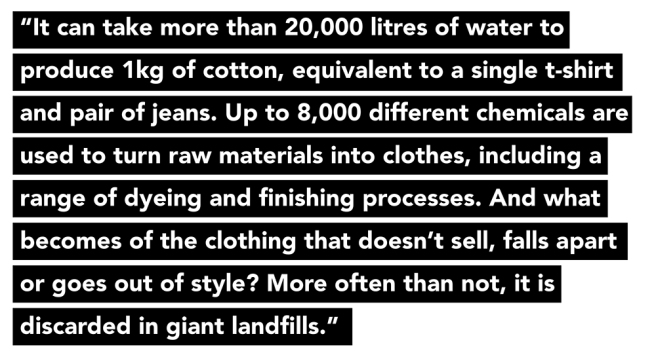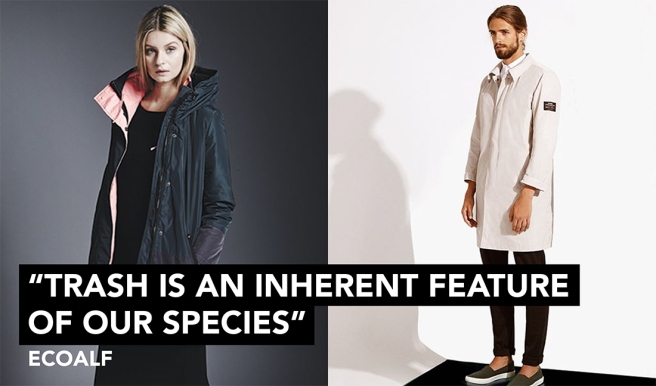
The fashion industry is big money especially in today’s fast fashion culture, were the consumer can buy new outfits every seasons so cheap that they can afford to throw them away by the next season. This is having a big impact on the environment and our natural resources. Fashion is the second most polluting industry in the world after the oil industry, especially when you take into consideration all the steps each garment goes through to arrive on the hanger.

There are several fashion labels now available which claim to be sustainable, however the most impressive of these is Ecoalf, a Spanish label dedicated to creating garments from 100% environmental products. Ecolaf was founded in 2009 by Javier Goyeneche who was troubled by the way the worlds natural resources were being used and wanted to create a sustainable fashion brand through upcycling. The label creates womenswear menswear childrenswear and accessories from 100% recycled products. Their manifesto is simple yet ambitious, Ecoalf aims to “stop the continuing pollution of the environment. But ECOALF isn’t willing to settle for just that, it wants to invert the process. New technologies allow us to do that, revolutionizing the idea of raw material.” Their manifesto is labeled TRASH(H)UMANITY which they claim is not a negative term they say “that trash is an inherent feature of our species” and that Ecoalf aims to “create objects that make your life more enjoyable without damaging our relationship with nature, and (does) it by erasing part of the ecological footprint that is fouling the world. ECOALF wants to share with you its passion for beautiful, useful products that clean up the planet. Help us take the concept of trash into the future.”

Ecoalf works with 6 main materials; discarded fishing nets, PET plastic bottles, used tyres, post consumer coffee, post industrial cotton and post industrial wool. By working closely with factories in 11 different countries Ecoalf is able to assess the process and work on new methods to manufacture materials. “Through integrating breakthrough technology we wanted to create clothing and accessories made entirely from recycled materials…without actually looking like it.” (Goyeneche)

It is refreshing to see a label which is fully committed to it’s ethical goals, you could say that Ecoalf is not only in the fashion industry but also in the environmental, ecological and recycling sectors.
Below is a video of the process in which Ecoalf upcycles plastic bottles.
References
- Ecoalf website; http://www.ecoalf.com
- Evans, Jonathan, October 11, 2013, ‘This Jacket is Made from Coffee Grounds’ http://www.esquire.com/style/mens-fashion/a25214/ecoalf-calgary-jacket-1013/
- Mañana, Carmen, October 24, 2014, ‘The Spanish guru of recycled fashion’ http://elpais.com/elpais/2014/10/24/inenglish/1414143732_193749.html
- Singer, Maya, April 20, 2015, ‘The Clothing Insurrection: It’s Time to Take On the Fashion Supply Chain’ http://www.vogue.com/13268385/fashion-supply-chain-environmental-impact/
- March 29, 2015 ‘How Can the Fashion Industry Become More Sustainable?’ http://www.businessoffashion.com/community/voices/discussions/can-fashion-industry-become-sustainable
Cotton field photo from http://aussiegossip.com.au/life/534 all other imagery from http://www.ecoalf.com

